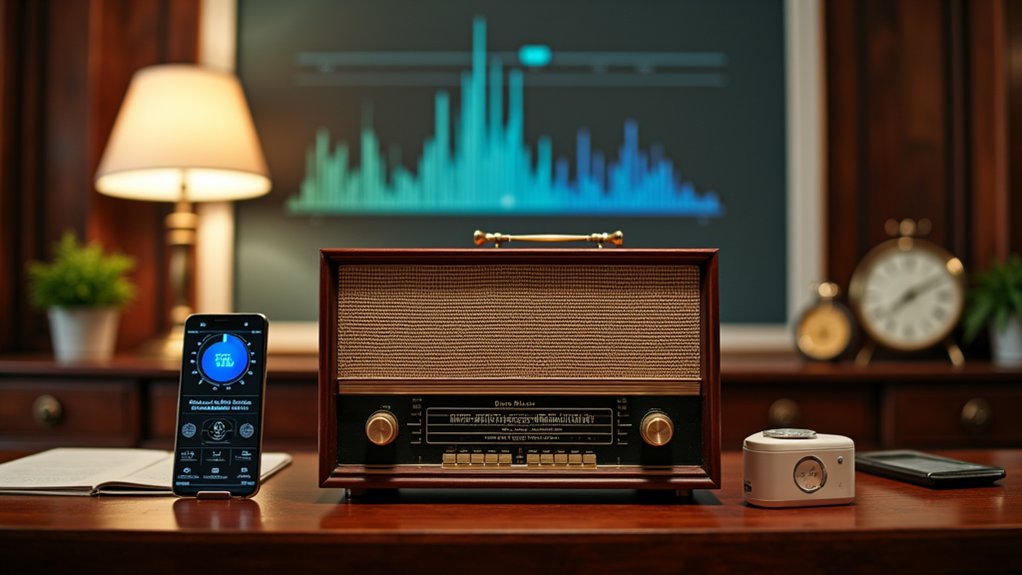Despite growing competition from digital platforms, traditional AM/FM radio continues to dominate the ad-supported audio landscape, commanding 64% of U.S. daily listening time in Q2 2025. This represents a slight decrease from 66% in Q1, indicating a gradual but noticeable shift in audience preferences as digital alternatives gain traction.
Despite intensifying digital competition, traditional radio maintains its crown in audio advertising, capturing nearly two-thirds of Americans’ daily listening time.
The audio ecosystem is experiencing significant demographic divergence, with radio’s stronghold varying dramatically by age group. Among listeners 35 and older, radio captures a robust 71% of daily ad-supported audio consumption, while its share among the 18-34 demographic has declined to just 45%. This younger audience increasingly turns to podcasts, which claim 32% of their listening time, and streaming music services, which now reach nearly a quarter (24%) of their daily consumption—a 41.2% year-over-year increase. Americans spend approximately 3 hours and 54 minutes daily consuming audio content across various platforms.
Canada tells a different story, with AM/FM radio maintaining a 70% share of ad-supported audio time across all demographics. The medium maintains over 80% weekly reach across all key Canadian age groups, demonstrating stronger resilience against digital competitors in the northern market.
Despite shifting landscapes, radio continues to deliver impressive advertising returns, ranking second globally in ROI behind only social media. This performance persists even as digital ad spend increases, with $9.56 billion moving from traditional to digital channels in 2025-2026.
Media buyers, however, frequently underestimate radio’s weekly reach—often believing it to be around 40% when actual figures show 87% penetration among U.S. adults.
The medium maintains stronger presence in rural and smaller communities where it remains a trusted information source, while facing stiffer competition in urban markets. Music creators utilizing radio should ensure proper registration with performance rights organizations to collect royalties whenever their compositions are broadcast. For emerging artists, this shift toward digital platforms offers new opportunities to leverage playlist pitching strategies that are unavailable in traditional radio formats. Industry analysts note that while streaming platforms offer granular targeting advantages, radio’s mass reach and “always-on” nature create unique effectiveness for broad campaigns, especially in sectors like healthcare, quick-service restaurants, and insurance. In comparison to television viewing habits, audio consumption shows greater diversity in platforms with only 74% of TV viewing occurring through ad-supported services.
As streaming services continue their upward trajectory, particularly among younger listeners, radio’s dominance faces gradual erosion—yet its commanding position in the ad-supported audio market remains unchallenged for now.




